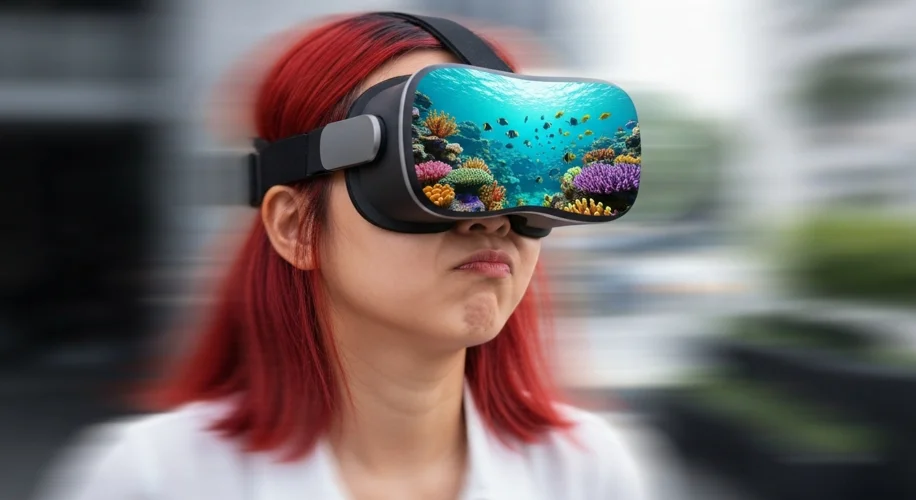Okay, so you’ve just strapped on that VR headset, ready to dive into a whole new world. Awesome! But maybe after a few minutes, things start feeling a little… off. That queasy, dizzy feeling? Yeah, that’s VR motion sickness, and it’s super common, especially when you’re new to it.
Let’s be real, nobody likes feeling sick. The good news is, it’s usually temporary. For most people, the adjustment period can last anywhere from a few sessions to a couple of weeks. It really depends on the individual and how much you’re exposing yourself to VR.
So, why does this happen? Our brains are pretty amazing at interpreting signals. In VR, your eyes are telling your brain you’re moving, but your inner ear (which controls balance) isn’t getting the same message. This mismatch is what can trigger that motion sickness.
But here’s the catch: you don’t have to just tough it out. There are ways to help your brain adapt and actually enjoy these immersive experiences. Think about legendary games like Half-Life 2 or Far Cry. These games, especially in their VR adaptations, offer a level of immersion that’s hard to beat, but they can also be tough on beginners.
Here are a few tips to make your VR journey smoother:
- Start Slow: Don’t try to marathon VR on your first day. Begin with shorter sessions, maybe 15-20 minutes at a time. Gradually increase the duration as you feel more comfortable.
- Choose Your Comfort Settings: Many VR games offer comfort options. Things like teleportation movement (instead of smooth locomotion), snap turning, and visual aids like comfort vignettes (where the edges of your vision darken during movement) can make a huge difference.
- Focus on Smooth Locomotion Games (with caution): While initially tempting to avoid, games that use smooth locomotion, like Half-Life 2 VR, can actually help you adapt if you use the comfort settings. Start with a comfort vignette enabled and smooth turning. As you get used to it, you can try reducing the vignette or trying less restrictive turning options.
- Take Breaks: If you start to feel even slightly queasy, stop immediately. Step out of VR, get some fresh air, and maybe sip some cool water. Pushing through it can often make it worse.
- Hydration and Airflow: Make sure you’re hydrated, and consider playing in a well-ventilated area. Sometimes a cool breeze can help.
- Find Your Flow: Some people find that games with minimal artificial movement or those that keep them stationary are easier to handle at first. Think puzzle games or experiences where you’re mostly looking around. But when you’re ready to explore, titles that have well-implemented comfort options are your best bet.
It’s all about finding that sweet spot where the immersion is incredible, but your body feels good. With a little patience and the right approach, you’ll be conquering VR motion sickness and exploring those amazing virtual worlds in no time. What are your go-to VR comfort tips? Let me know in the comments!

